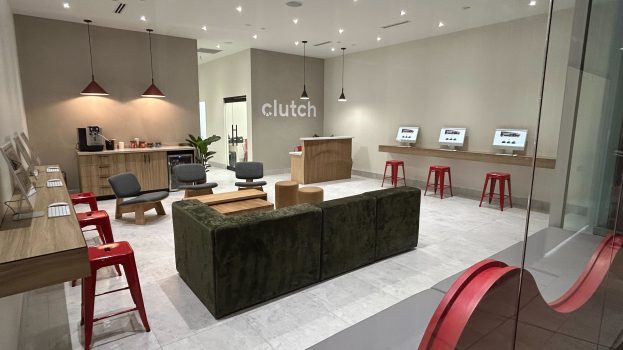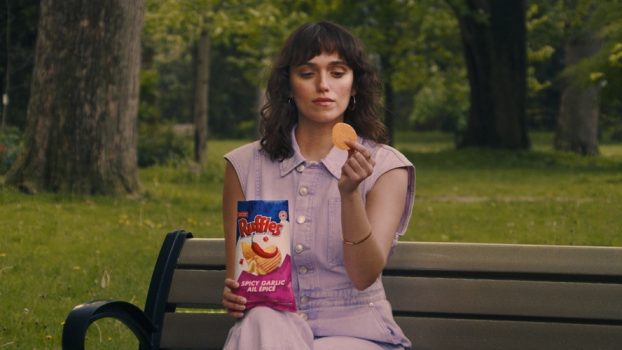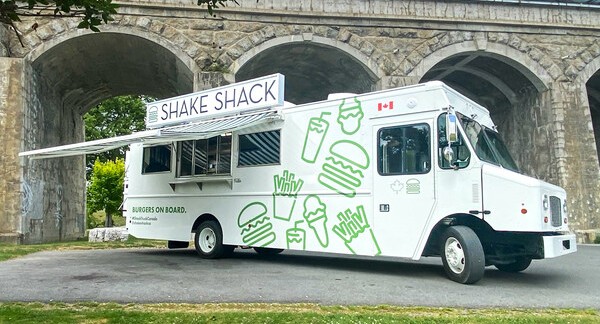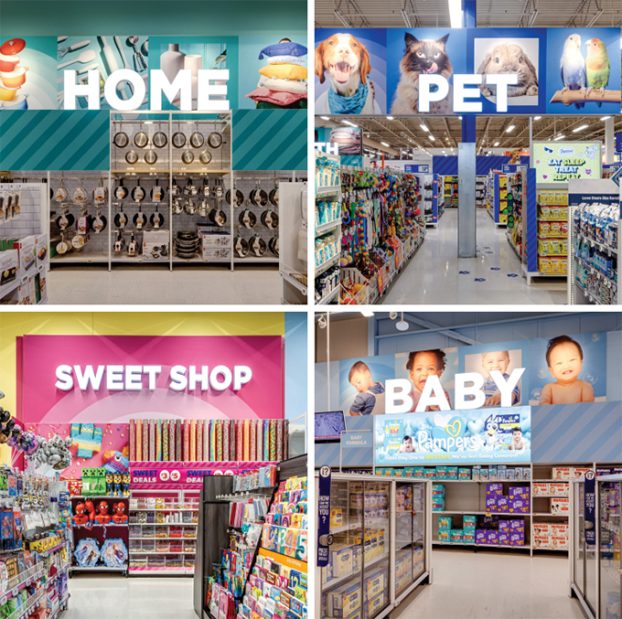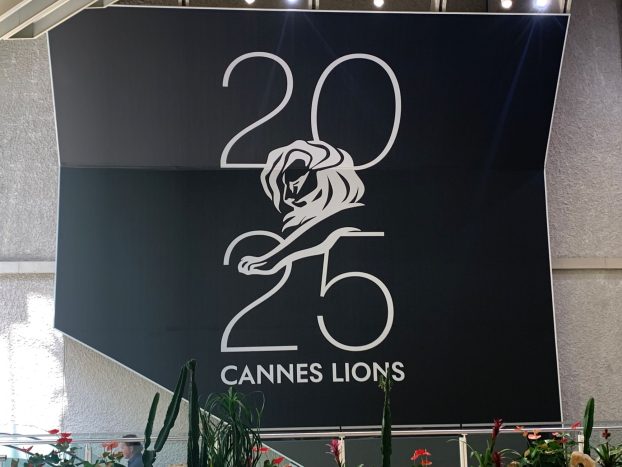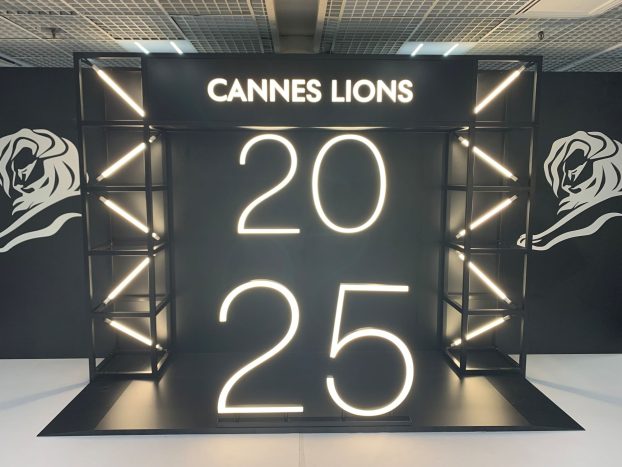This story appears in the May/June 2018 issue of strategy.
With its 50th anniversary on the horizon, Mazda is pivoting its brand from a fun-to-drive, value vehicle towards one of affluence. It’s a sensible shift as the young adults the brand targeted in the early ‘00s have grown up and are ready to spend on a car that meets their more premium demands.
For Mazda, its new approach doesn’t hinge on providing a sense of luxury or exclusivity. Rather, it’s about craftsmanship and attention to detail – creating the indie coffee shop or craft beer of the car world.
Like any well-“crafted” brand, the car company is reflecting on its roots.
Many people don’t realize that Mazda selected Canada as its first North American market in 1968, ahead of the more populous U.S., says Neal Bouwmeester, national manager, brand communications.
The smaller country, with less allegiance to home-grown car manufacturers than the U.S., made for an ideal entry into North America. Mazda sold 3,000 cars in its first year, landing in the ninth spot among car companies in Canada. By 1980, it was moving 13,000 vehicles annually (though, in comparison, Honda, launched four years after Mazda and was selling 25,000 cars annually).
Early marketing included print and TV (handled by FCB Vancouver) and focused on purchase incentives and vehicle features, but much of Mazda’s success in the ‘70s and ‘80s came from its Japanese origins – and a consumer primed to want something a little different.
At the time, Japanese cars were seen as better value than Ford, GM or Chrysler. “The Japanese auto industry found its way into this position by delivering a low-cost, high-quality, efficient, value-for-money product,” wrote professor Kenneth Courtis and Ph.D student Paul Summerville in a 1986 Toronto Star article on the popularity of Japanese vehicles.
Mazda’s competitors Toyota, Honda and Nissan, were seen as trusted and often cutting-edge manufacturers, having collectively invested more than $6 billion ($13.2 billion today) in high-tech automotive R&D by 1984, the duo said.
The result was an industry divided. North American manufacturers focused on creating high-volume production with little room for modification to the line. Japanese makers were more likely to have a mixed-batch production system, allowing them to quickly introduce new vehicles or features. That, coupled with a competitive price point, enabled the East Asian brands to flourish.
However, rapid growth wouldn’t last long, as Canada and the U.S. introduced import quotas on Japanese manufacturers in 1981, which stymied the market, says Gregory Young, director of brand engagement at Mazda.
In response to government-imposed limits, Japanese manufacturers began shedding their “good value” image in favour of a mid-market pricing strategy, targeting niches like mini vans or mid-sized sedans, says Young. It worked (to an extent), allowing the car companies to weather the quotas until they were lifted in the mid-‘80s.
For Mazda, it wasn’t until 1988 that growth accelerated, thanks to a mini sports car.
The brand’s Miata launched to such fanfare (and with almost no marketing spend) that it became a bit of a legend in the company’s PR department.
The zippy sports car was the only one of its kind in the market, says Young, many manufacturers had stopped producing light-weight vehicles. That also meant no one was selling fun-fast cars. Mazda saw a white space – and Miata was a hit.
The word-of-mouth on Miata was a success and the car co pulled its advertising, opting for a PR push. In its first year, without a cent of ad dollars behind it, the company sold 3,500-plus sports cars, with consumers added to a wait list. Anecdotally, Young heard stories of people following transport trucks to dealerships, offering them thousands of dollars to stash a Miata aside so they could get ahead of demand.
The success of the the vehicle prompted two significant changes at Mazda. First, the company launched a PR department in 1991, headed by Young, to support the marketing team. Second, it bolstered its product pipeline, rolling out new models, like mini vans, to meet growing demand from new consumers.
In ‘91, during his first six months at the company, Young helped launch five cars. In comparison, up until the ‘80s, Mazda was lucky if it launched two a year.
“We realizated that [the brand] had enormous potential and there was a lot of investment in product development to expand the business,” Young says.
The car co’s PR and marketing strategy shifted. Prior to the early ‘90s, much of the focus was on individual features, with little thought given to the overarching Mazda brand. Miata was a hit and did not struggle with name recognition, but few consumers were able to say “Miata is a Mazda,” says Young.
“We were not going to grow and be who we wanted to be strictly through fixed marketing and incentives,” he adds. “At that time, we didn’t talk about building the brand, we talked about building corporate image. But… to grow our business [we had to invest] in traditional marketing and PR, in dealer development and expanding our network.”
Work began to build the Mazda brand overall, with the company name taking greater prominence in ads.
Two years into Young’s tenure, the Japanese market took a tumble. Momentum evaporated, and focus shifted to stay afloat.
In 1992, Mazda was the third-ranked import manufacturer in Canada, moving 62,000-plus vehicles annually. While North American car companies saw a sales bump, Japanese manufacturers growth faltered, and Mazda saw a continual decline in sales. By 1994, it moved less than 55,000 cars. By 1995, the company laid off 200 employees in Canada.
That same year, Mazda was forced to take investment from Ford, turning over management to the North American car co.
Compounding the change, the parent company of Mazda’s long-standing agency partner FCB, True North Communication, purchased another agency that counted Chrysler among its clients. Dome/FCB, as it was known at the time, was forced to resign the Mazda account, shuttering its Vancouver office in the process.
To find efficiencies, the decision was made to have one agency partner for all of North America, with strategy and creative handled centrally.
In 1998, Mazda selected Doner, a Michigan shop that had worked with Ford, and the result was a new brand identity that helped propel the car co to new heights. (Mazda worked with Doner’s Toronto office on creative for Canada, with strategy coming from the U.S. arm.).
In the RFP, agencies were tasked with creating a video that captured Mazda’s brand essence, Young says. Doner came back with a youthful video, full of energy, with the tag “Zoom zoom.” It won the account.
Despite the popularity of “Zoom zoom” internally, the decision was made to go with a stronger call-to-action to move people into dealerships, he says. As such, early marketing from the agency focused on the tag “Get in, be moved,” while the brand’s colour scheme shifted to yellow and black to reflect the road.
But “Zoom zoom” percolated in the heads of agency staff, and when Mazda began reinvesting in product development, Doner resurfaced the whispered chant.
To launch Mazda’s SUV, the agency unveiled two pitch videos to showcase possible “personalities” for the brand. One featured the SUV surrounded by Miatas, with a somewhat forgettable spokesperson. The second was a 12-year-old boy, dressed in a suit who simply said, “Zoom, zoom.”
The marketing execs loved it, but were stunned when Doner introduced an upbeat song from Brazilian group Serapis Bay that repeated “Zoom zoom zoom.”
“We thought they were nuts,” Young recalls.
But the idea tested well and rolled out in theatres. Within six months, it was one of the most recognizable taglines of the year, with 5% of Canadians naming it with unaided recall.
With that recognition came sales. Between 1998 and 2000, the company sold around 27,000 per year. By 2006, it nearly tripled that number, moving 80,000 plus vehicles annually.
The target began to shift, Young adds, with the brand cementing its status as a “fun to drive” vehicle. In the early 2000s, Mazda was one of a few companies going after first time buyers in their early 20s who, at the time, made up less than 15% of new car buyers. Back then, Young told Marketing magazine that if it could secure their loyalty, the brand would have it for life.
Other activations, such as partnerships with Flare magazine or clothing brand Roots, cemented the company’s push towards a young audience, though nothing was as effective as the youthful “Zoom zoom” push.
The parent company relaunched its popular Protégé line as the Mazda 3 in 2003, much to the chagrin and protests of the Canadian marketing teams, Young says. But Mazda 3 succeeded beyond expectations to become the car company’s most popular line, thanks to the equity of “Zoom zoom.”
But that equity comes with its own set of baggage, says Ari Elkouby, VP and CD at J. Walter Thompson, which took over the account from Doner in 2010.
“’Zoom zoom’ is probably one of the most iconic taglines for a brand,” he says. “That’s good and bad. It’s recognizable, but it’s bad because at the time it was written, Mazda’s products were fun-to-drive cars and not much else. That spirit of youthfulness was right at the time, but the product has evolved tremendously since.”
So on the eve of its 50th anniversary, the car co is shifting gears, aging with its target and going after more premium branding. The shift in tone began when Ford and Mazda split ways in 2013.
“We’re a relatively small player in the grand scheme of things,” says Bouwmeester. In 2017, Mazda sold 67,000 cars compared to Honda’s 197,000. “We knew we had a different product, so now we’re focusing on creating a different experience.”
The car co shifted its target towards a psychographic, aiming to reach those for whom a car is more than a large appliance that gets you from point A to point B, and for whom driving is a pleasure rather than a chore.
“These drivers tend to be a little more affluent,” says Bouwmeester. The goal is to become a premium brand, but not one built on exclusivity, like those of Mercedes or Lexus.
Bouwmeester likens the change to that of the craft beer industry. Since Mazda is a smaller player and doesn’t compete on volume, it’s focusing on the story and craft behind its cars’ production. The result is a more cinematic, less fun-and-flirty tone, says Elkouby.
As part of its 50th anniversary campaign, Mazda profiled designers and artists behind the vehicles – those who model the cars out of clay before they hit the assembly line. The campaign, launched in January with a media buy from Mindshare, and will have more directed 50th anniversary communications, and dealership activations throughout the year.
Mazda is also introducing its new image at the dealership level, adding more white space, as well as anniversary illustrations from artist Guy Allen to make the showrooms comfy. Dealers are trained to be better storytellers, so when a customer speaks with a salesperson the process doesn’t feel like a pitch.
“The end goal is to get to a place where price doesn’t really factor into the conversation right out of the gate,” Bouwmeester says. “The perfect interaction for us is when people walk into a dealership, instead of saying ‘How much will it cost,’ it’s a discussion around [features], like why the doors are shaped a certain way.”
With files from Adam Stanley



